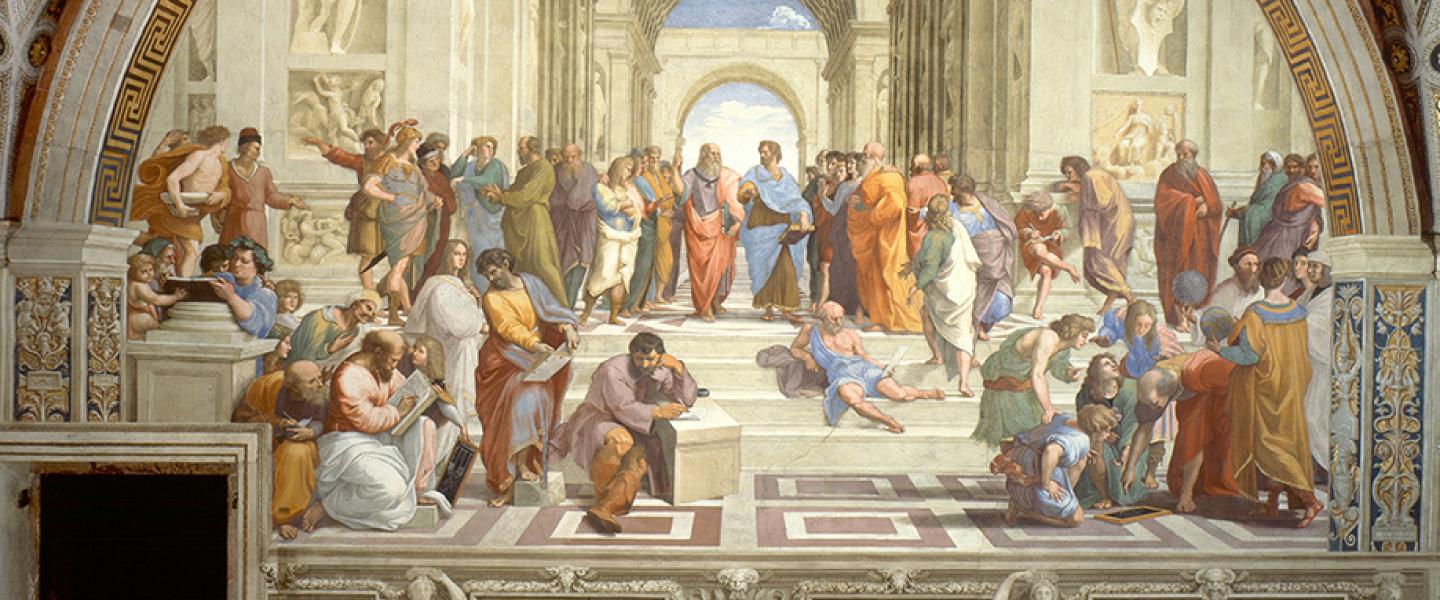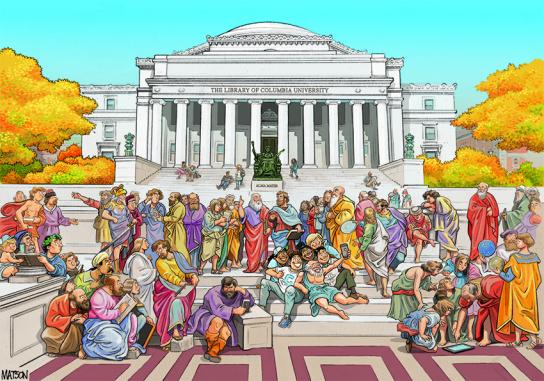Art


Scuola di Athene (School of Athens)
The School of Athens (Italian: Scuola di Atene) is a fresco by the Italian Renaissance artist Raphael. It was painted between 1509 and 1511 as a part of Raphael's commission to decorate the rooms now known as the Stanze di Raffaello, in the Apostolic Palace in the Vatican. The picture has long been seen as "Raphael's masterpiece and the perfect embodiment of the classical spirit of the Renaissance". The painting is notable for its accurate perspective projection.
The subject of the "School" is actually "Philosophy," or at least ancient Greek philosophy, and its overhead tondo-label, "Causarum Cognitio", tells us what kind, as it appears to echo Aristotle's emphasis on wisdom as knowing why, hence knowing the causes, in Metaphysics Book I and Physics Book II. Indeed, Plato and Aristotle appear to be the central figures in the scene.
Commentators have suggested that nearly every great ancient Greek philosopher can be found in the painting, but determining which are depicted is difficult, since Raphael made no designations outside possible likenesses, and no contemporary documents explain the painting. Compounding the problem, Raphael had to invent a system of iconography to allude to various figures for whom there were no traditional visual types. For example, while the Socrates figure is immediately recognizable from Classical busts, the alleged Epicurus is far removed from his standard type. Aside from the identities of the figures depicted, many aspects of the fresco have been variously interpreted, but few such interpretations are unanimously accepted among scholars.

In the center of the fresco, at its architecture's central vanishing point, are the two undisputed main subjects: Plato on the left and Aristotle, his student, on the right. Both figures hold modern (of the time), bound copies of their books in their left hands, while gesturing with their right. Plato holds Timaeus, Aristotle his Nicomachean Ethics. Plato is depicted as old, grey, and bare-foot. By contrast, Aristotle, slightly ahead of him, is in mature manhood, wearing sandals and gold-trimmed robes, and the youth about them seem to look his way. In addition, these two central figures gesture along different dimensions: Plato vertically, upward along the picture-plane, into the vault above; Aristotle on the horizontal plane at right-angles to the picture-plane (hence in strong foreshortening), initiating a flow of space toward viewers.
To hear more about this portion of the fresco, listen to BBC's podcast where host Melvyn Bragg and guests discuss Raphael's depiction of Plato and Aristotle.
It is popularly thought that their gestures indicate central aspects of their philosophies, for Plato, his Theory of Forms, and for Aristotle, with an emphasis on concrete particulars. Many interpret the painting to show a divergence of the two philosophical schools. Plato argues a sense of timelessness whilst Aristotle looks into the physicality of life and the present realm.
Sourced from Wikipedia.


This art piece is the inspiration of CCT's Cartoon Caption Contest for the Winter 2019-2020 issue.

Please log in to comment.